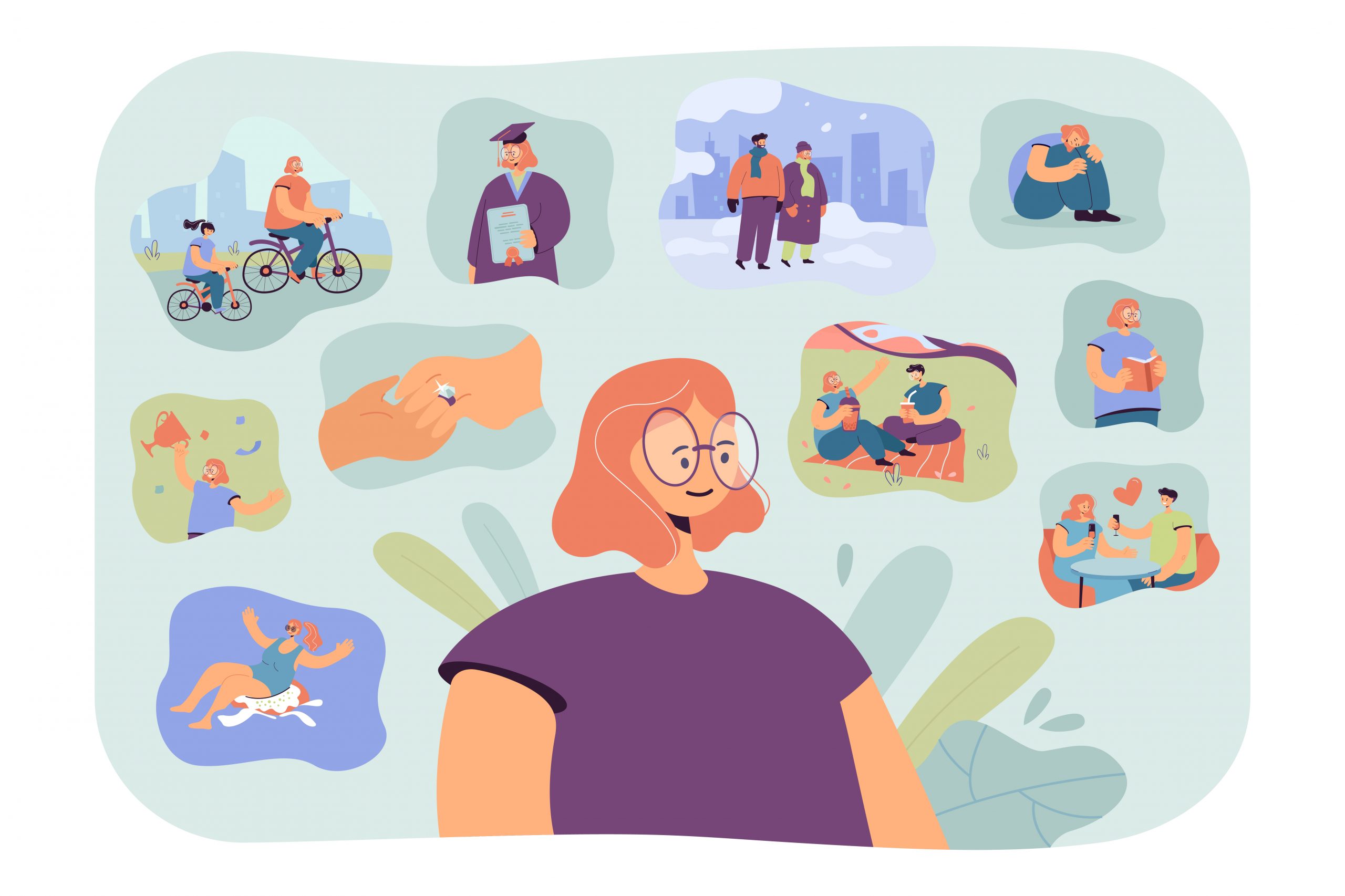- Qui a le meilleur mensonge ? (Who had the best lie?)
- Étiez-vous choqué des vérités et/ou mensonges ? Lesquels ? (Were you shocked by the truths and/or lies? Which ones?)
💭French Level 2, Activity 13: Passé composé et l’imparfait / Discussing the Past (Online)
Products: Childhood pastimes
Practices: Playing
Perspectives: As in many western cultures, children enjoy lots of free time, and play games with one another!
NCSSFL-ACTFL World-Readiness Standards:
- Standard 1.1: Students engage in conversations or correspondence in French to provide and obtain information, express feelings and emotions, and exchange opinions.
- Standard 1.2: Students understand and interpret spoken and written French on a variety of topics.
Idaho State Content Standards:
- COMM 1.1: Interact and negotiate meaning (spoken, signed, written conversation) to share information, reactions, feelings, and opinions.
- COMM 2.1: Understand, interpret, and analyze what is heard, read, or viewed on a variety of topics.
- CLTR 1.1: Analyze the cultural practices/patterns of behavior accepted as the societal norm in the target culture.
- CLTR 1.2: Explain the relationship between cultural practices/behaviors and the perspectives that represent the target culture’s view of the world.
NCSSFL-ACTFL Can-Do Statements:
- I can talk about things I did when I was younger.
- I can exchange information about myself with someone.
- I can express differences between one-time and ongoing activities.
Materials Needed:
Warm-up
1. Begin by introducing the Can-Dos for today’s activity.
2. Ask the group these questions. Make sure they are using the correct form of imperfect or passé composé.
- Quand tu étais jeune…qu’est-ce que tu faisais… (When you were young…what did you do…)
- après l’école ? (after school?
- le week-end (la fin de semaine) ? (on the weekend?)
- pendant les grandes vacances (les vacances d’été) ? (over summer break?)
- avec tes ami(e)s ? (with your friend(s)?)
Main Activity
1. Tell your students, “We will be playing two truths and a lie using the imparfait et passé composé.”
“Nous allons jouer “deux vérités et un mensonge” en utilisant l’imparfait et le passé composé.”
2. “The first time, we are going to play using the imperfect. Think of three things you can share–two truths and one lie. For example, I played baseball for 5 years…I lived in Japan when I was 10…and in high school, I was first in my class.”
“Le premier tour, nous allons jouer avec l’imparfait. Pensez à trois choses que vous pouvez partager– deux vérités et un mensonge. Par exemple, je jouais au baseball lorsque j’étais enfant…j’habitais au Japon quand j’avais 10 ans…et au lycée, j’étais première de ma classe.”
3. “After, we are going to share our statements with the group and guess which ones are the truth and which is the lie.”
“Après, nous allons partager nos phrases avec le groupe et deviner lesquelles sont vraies et lesquelles sont fausses.”
4. “Then, we will do the same thing with passe compose.”
“Ensuite, nous ferons la même chose avec le passé composé.”
Wrap-up
End of Activity:
- Can-Do statement check-in… “Where are we?”
- Read can-do statements and have students evaluate their confidence.
- Encourage students to be honest in their self evaluation
- Pay attention, and try to use feedback for future activities!
NCSSFL-ACTFL Can-Do Statements:
- I can talk about things I did when I was younger.
- I can exchange information about myself with someone.
- I can express differences between one-time and ongoing activities.
Cultural Resources
How to Remix a Pathways Project Activity
Feeling creative? The Pathways Project needs your help in remixing activities for the K-12 classroom.
Try taking an activity to the next level by:
- Add new content (something you’ve created or another OER source)
- Contribute additional activity suggestions
- Integrate authentic materials such as videos, infographics, photos, etc.
- Suggest how to implement the activity in the classroom
- Customize the content for a specific audience or group of learners (for example, K-5 learners or to differentiate for student’s needs)
We want to make it easy to share back with the larger Pathways Project Community! Simply, click this link to remix this activity.
Please consider sharing your remixed activity with us by emailing the activity link to Pathwaysproject@boisestate.edu so that Pathways continues to grow!


